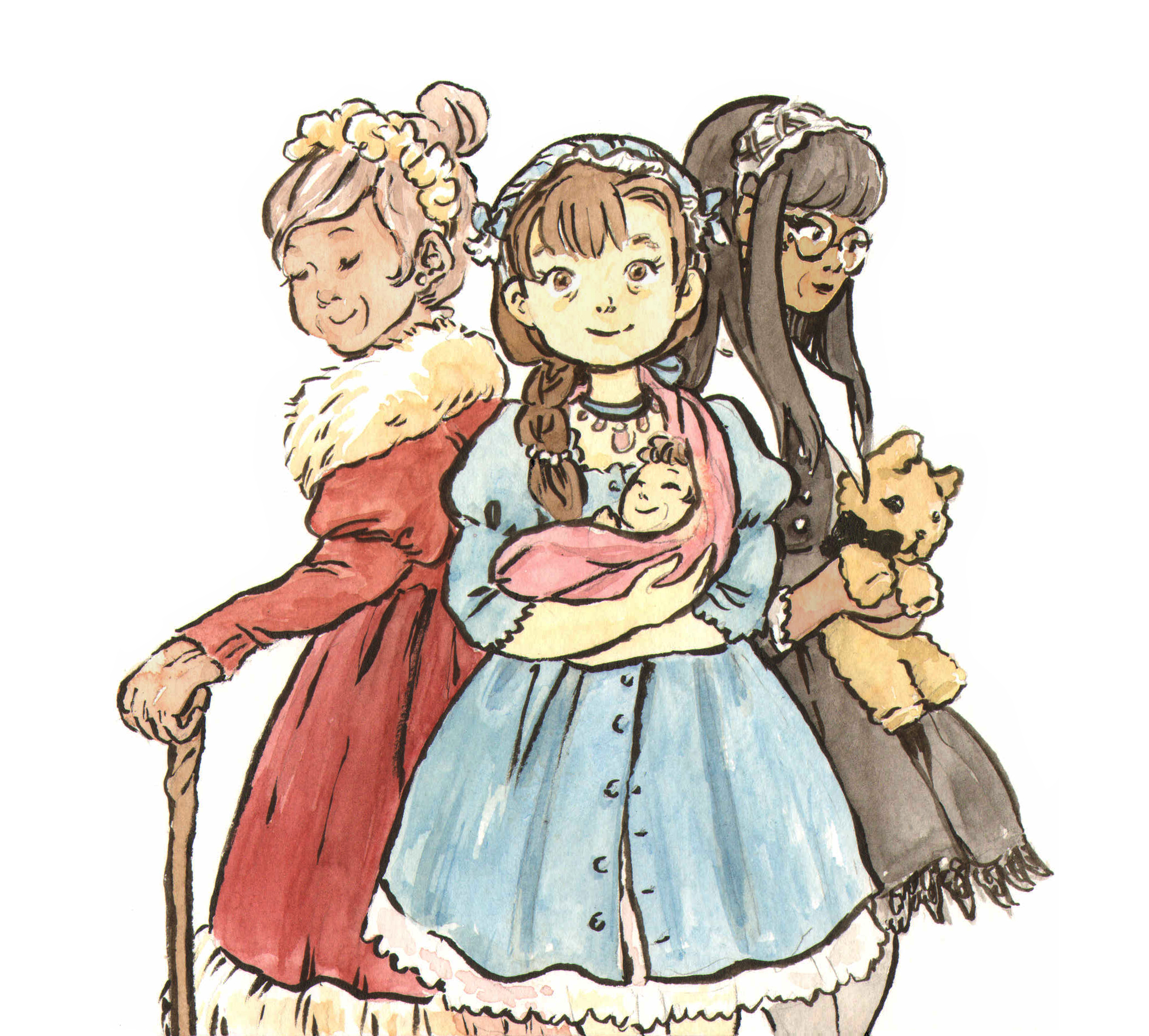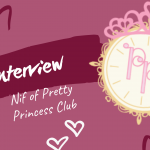Can You Age Out of Lolita? Kuniko Kato & Misako Aoki on Lolita Throughout Life

Illustration by Lucy Kagan – http://lucykagan.com – @cottonbook on Tumblr & Instagram
Upstairs in King’s Carriage in the Upper East Side of Manhattan, a room full of New York lolitas sat listening to a Q&A from designer Kuniko Kato after a fashion show of the latest Physical Drop designs. In between the show and the Q&A, Kato stood up to explain her intentions behind each design that had gone down the runway. She pointed out a dress with a retro feel here or an elegant look there, but also, she pointed out the simplicity that made the dresses easier to wear for aging lolitas, a full skirt that accommodated pregnancy, and a dress that opened easily in the front for new mothers. Someone in the audience asked further about Kato’s feelings about age and lolita, and the answer could be clearly found on her Twitter page a few weeks later in a different context.
Later that month, on a Kansai TV show called Seven Rules, model and Kawaii Ambassador Misako Aoki had finally revealed her previously undisclosed age, 34, and received a comment from another guest that, either intentionally or not, was perceived to be a slight on Aoki’s style: “I wonder what this will look like when you’re 45.”
Kato, at the tea party in New York had talked about how she saw all the lolitas who were in the fashion movement from early on, now growing up and starting families. For Kato, growing up doesn’t mean giving up what you love because of societal pressures. In what would become her response to the TV guest’s comment, she told us, in essence, “I am 45. When we were walking around New York this weekend, we saw little old ladies wearing hot pants. So, why not lolita?”
Here is the Twitter post inspired by the comment, and photos of the Physical Drop afterparty with plenty of 25+ lolitas: https://twitter.com/katokuniko/status/915767613711515648
The idea that having fun with fashion is only for the young is pervasive in Japanese and American cultures. In Japan, there is still a cultural expectation (though it is slowly changing) that young women should dress and behave in a way that will attract a good husband. On the other side of the ocean, there is a different nuance to that idea: it is that women ought to dress to be taken seriously, and implicit in that is that cute and feminine things are not respectable. It certainly was not considered respectable 20 or 30 years ago to dye your hair wild colors in America, where now it is common among media influencers and people of many age groups. Will lolita become tolerated in American culture, too? Would that destroy the point? In mainstream sources such as the blog and documentaries Advanced Style and Iris, have introduced to American culture the theme of the elderly dressing eccentrically, which seems to be pretty well-received. This has a lot to do with being past what’s considered marriageable age, and we find eccentricity in old ladies to be charming, harmless, and inconsequential. And when you’re not a tiny old lady? What about wearing lolita specifically, which is often has a very explicitly childish appearance? Lolita’s primary concern is to ignore all of these things, or rather, to fly in the face of them. So then, regardless of how the larger society sees us, how do we see ourselves?
Younger lolitas in the US used to say that once you hit a certain age, you shouldn’t be a lolita any more, that it was just for teenagers. Recalling when in the early 2000s, American lolitas were posting on the egl livejournal community about getting too old for the style upon hitting their 20s, following up with massive “leaving lolita” sales, these memories seem distant, and it seems that these activities have happened less and less nowadays. Posts on current forums are far less likely to talk about “aging out” or “graduating” from lolita these days – the Rufflechat facebook post sparked by Misako Aoki’s appearance on Seven Rules was filled with comments that affirmed being a 25+ lolita. As we grow up, we learn to accept each other more as well as ourselves. Kuniko Kato is not the only one to start capitalizing on the aging community, as we have seen with the maternity-lolita dresses (and the reaction was enough to show that there’s still some resistance to being a full adult in lolita), and she encourages us to not stop being true to the whimsical maiden inside. When it comes down to it, what was ever really the point of lolita if not to resist being boxed into society’s rolls for us and be the princesses we feel like we can be? Why would we ever then impose that box on another, let alone our future selves?
The lolita community certainly has aged, and you can often meet 16-year-olds, 25-year-olds, and 40-year-olds at the same meet up. Age dynamics in a group can be awkward, they can be cliche, but ultimately, they’re part of what makes us a more interesting community, and one of my favorite communities, for the pervasive feeling of acceptance across all bodies, regardless of the Behind the Bows posts. When we’re together in person at a tea party, I always get the sense that this is a community that’s open to all. Even if you’re not in a comm at all, you can be the perfect vision you have of yourself when you’re in lolita. I think the most wonderful thing that comes with lolitas growing up and growing older is that we’ve become more mature, I hope we become even stronger and wiser as we reach our vintage.
Lucy is a full-time textile designer & illustrator, and the creator of fledgeling indie brand Cottonbook. She loves lolita, otome, and mori girl, and is obsessed with clouds.








